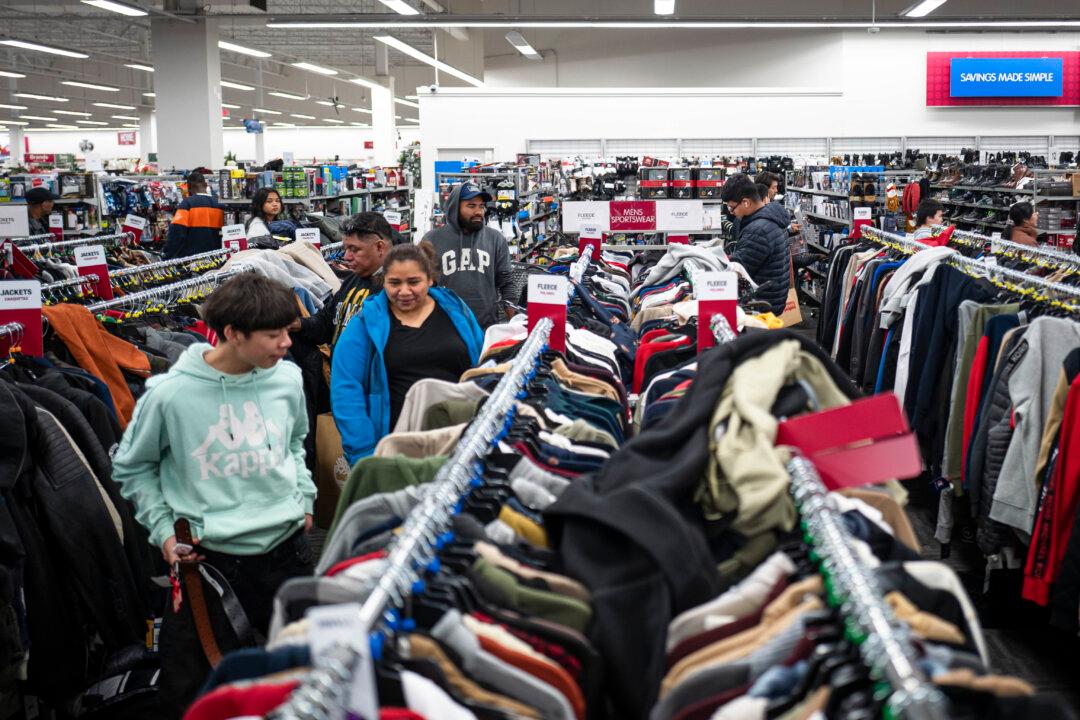U.S. consumers put a lid on their spending at the start of 2025, potentially indicating weaker economic growth prospects.
The consensus forecast suggested a 0.1 percent drop.
Last month’s decline was the sharpest drop since March 2023, and market watchers attributed the lackluster consumer spending to harsh winter weather and the Southern California wildfires.
Sales at sporting goods stores, hobby stores, musical instrument stores, and bookstores led the decrease, falling 4.6 percent. This was followed by motor vehicle and parts dealers (negative 2.8 percent), online outlets (negative 1.9 percent), and furniture stores (negative 1.7 percent). Conversely, sales at gasoline stations and food and drinking establishments increased by 0.9 percent.
In addition, control group retail sales—excluding receipts from building-material retailers, car dealers, gas stations, mobile home dealers, office supply stores, and tobacco outlets—fell by 0.8 percent monthly. This fell short of the consensus estimate of a 0.3 percent increase.
But while there are concerns that the January retail sales report could signal a slowing economy—consumer spending accounts for about two-thirds of national economic activity—experts say there should not be a cause for panic.
“Don’t freak out, folks, monthly economic indicators are often volatile during natural disasters and bad winter weather,” Bill Adams, chief economist for Comerica Bank, said in a note emailed to The Epoch Times. “As with the soft January jobs report, the month’s weak retail sales report tells less about the economy’s trend than a report for a month that isn’t buffeted by big one-off shocks.”
Adams said he believes that retail sales will recover in the coming months as winter abates and Californians rebuild.
The January 2025 figures were “pretty impressive ” compared with a year ago, according to Ted Rossman, the senior industry analyst at Bankrate.
“It was unusually cold and snowy across much of the country last month, including parts of the south which rarely see snow, so these figures are especially impressive in that context,” Rossman said in a statement to The Epoch Times.
Retail sales expanded 4.2 percent year over year, making it the third consecutive month of at least 4 percent annual growth.
U.S. stocks were little changed following the report. The weaker-than-expected retail sales may have given investors a glimmer of hope that the Federal Reserve could lower interest rates sooner than projected, amid slowing growth.
In recent days, the futures market pushed back its rate-cut expectations to September 2025. However, traders have lifted the odds of the next quarter-point reduction to the benchmark federal funds rate to June or July, according to the CME FedWatch Tool.
Inflation in Focus
Inflation remains a problem for both consumers and the Federal Reserve.This week, inflation in the consumer price index rose to 3 percent for the first time since June 2024, the fourth straight monthly increase. The producer price index (PPI), a measure of prices paid for goods and services by businesses and a possible precursor of future inflation trends, came in higher than expected.

“The PPI report doesn’t tell the Fed much new,” Adams said. “They are on hold near-term, and are likely though not assured to make a single rate cut in 2025 if prices with lots of momentum like housing and residential rents continue to cool and offset upward pressures on inflation from post-election changes to economic policy.”
While President Donald Trump’s tariffs will likely not appear in the economic data anytime soon, industry experts say that the new administration’s trade agenda could bolster consumer prices.
David French, executive vice president of government relations at the National Retail Federation, lauded Trump’s efforts to tear down trade barriers and address imbalances. At the same time, French noted that the president’s reciprocal tariffs would disrupt supply chains and impact household budgets.
Speaking to Congress over two days, Fed Chair Jerome Powell said that monetary policymakers are not in a hurry to lower interest rates, reiterating his remarks to reporters at last month’s post-meeting press conference.
He said that reducing policy restraint too fast or too much could rekindle the inflation flame and that easing policy too little or too slowly could threaten economic growth and the labor market.
The next two-day meeting of the policymaking Federal Open Market Committee is scheduled for March 18 to 19.







